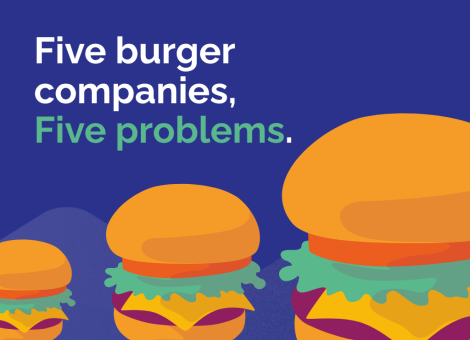When it doesn't all go to plan: an unprecedented climate and a strategy to react
In this unprecedented global situation, markets are still trying to establish what such sudden, unexpected volatility will mean for various industries. In particular, what could it spell for the future of fuel and convenience retailers? As we head towards a historical recession, we assess how fuel retailers can make responsive decisions about how best to manage their network in the weeks and months to come.
Under current (but ever-changing) guidelines, most gas stations and c-stores remain open. Yet with varying degrees of travel restrictions imposed worldwide, it’s an uncertain time for fuel retailers. Even if fuel and convenience retailers remain open, with restrictions to movement many countries are seeing demand for fuel dropping by at least 30-40% — in the UK, up to 70%.
What fuel retailers can do, however, is take this time to assess their position, their competitors’ actions, and be ready to act fast in this ever-changing situation.
What an increasingly unstable fuel market looks like
As the outbreak continues to spread and travel declines, demand is reducing significantly. If refineries are forced to reduce production to meet the decreased demand and lack of storage capacity, prices may increase quickly and dramatically as demand returns. This could create havoc for those with manual pricing and operational systems.
Fuel retailers are not unfamiliar to volatility. In a number of markets, planned governmental deregulation has left markets incredibly unstable. And while this unprecedented climate is like no other, there are some steps and strategies that can be adopted.
One eye on the horizon
As this is an ever-changing situation, the importance of reviewing your sites in the context of the landscape has never been greater.
In the UK for example, it’s reported that 25-50% of fuel sites may have to shut as they become unprofitable. To minimize the impact to your network and overall profits, data analytics tools and market experts like Kalibrate can help retailers identify which sites to focus on and which to close, whether it’s temporarily or longer term.
And while markets continue to fall, it’s critical to avoid a race to the bottom, and take a step back to evaluate your network instead. You’ll see more long-term success by doing this than by sacrificing margin in an attempt to draw volume.
Instead, consider undergoing Performance Potential Quadrant analysis — it allows you to segment your sites, understand the impact of potential changes, and identify where you can be quickest to respond.
Know your volume magnets
Pricing is only one of the 7 Elements that influence customers to visit your site. Consider what other strategic initiatives you can capitalize during this unpredictable time. For example:
- The stock you’re holding during this period. Are you attempting to meet public demand?
- The cleanliness of your facilities and bathrooms
- The measures your staff are taking to minimize contact
There are less tangible operational enhancements, such as extending opening hours, maintaining high levels of cleanliness, keeping shelves well stocked with products your customers want and need, ensuring staff are treating customers well, and instigating training if there’s room for improvement. Also, consider how you are treating your own staff and how the public perceives this treatment.
These factors can play a hugely important role in drawing customers to site in the weeks and months to come.
Review. And review again.
As part of your ongoing network review, assess whether the global situation is creating unmanageable unprofitability in part of your network. If you need to temporarily close or divest in some sites, to minimize revenue loss, consider ways to rationalize your network and focus footfall to stronger sites. But keep your strategy agile; you may find that circumstances are constantly changing and demand changes, fast.
Data and analytics are key in these circumstances, it’s incredibly hard to be responsive with “gut feel” operational and strategic processes. To monitor and manage this level of volatility, and respond to such rapid market changes effectively, you need to base your decision-making on accurate, real-world data – not guesswork.
Kalibrate Planning can help you master exactly this kind of market volatility, and evaluate competitors’ strengths and weaknesses at micro and macro level through a combination of AI-powered decision making and human consultancy.
Read more articles about:
Location intelligenceSubscribe and get the latest updates
You may unsubscribe from our mailing list at any time. To understand how and why we process your data, please see our Privacy & Cookies Policy
Related posts
Location intelligence
Five burger companies, five problems
These burger brands had challenges from international growth to understanding franchise locations cannibalization,...

Location intelligence
Market Optimizer: Demo video
Market Optimizer allows users to strategically grow their network in existing markets while balancing revenue...

